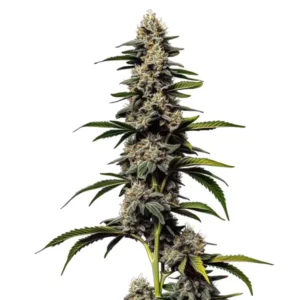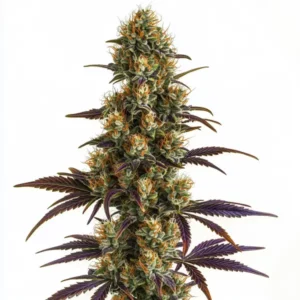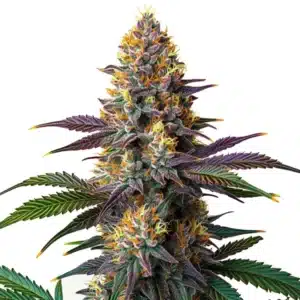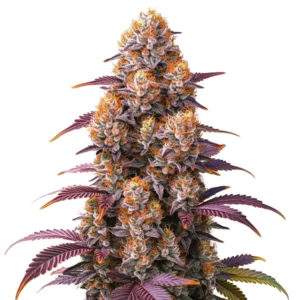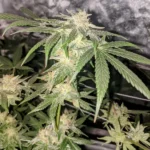
Proper ECM Cannabis: Mastering Nutrient Levels for Maximum Growth
Knowing and maintaining proper ECM cannabis is key to achieving high yields and potent buds. Electrical Conductivity Measurement (ECM) directly impacts how your cannabis plants absorb nutrients, and getting it right can mean the difference between a healthy crop and one that struggles. In this comprehensive guide, we’ll break down what ECM is, why it matters, and how to measure and manage it throughout your cannabis growing cycle.
What is ECM and Why Does it Matter for Cannabis?
Cannabis cultivation is all about precision. Managing the balance of nutrients, water, and environmental factors plays a huge function in the health and success of your plants. One of the most critical aspects of this balance is monitoring and maintaining proper ECM cannabis. But what exactly is ECM, and why is it so important?
Recommended Strains
Permanent Marker
|
|
THC | 32% - 34% (High) |
|
|
Type | Feminized |
|
|
Yield | High |
|
|
Phenotype | 50% Indica / 50% Sativa |
Permanent Marker Auto
|
|
THC | 32% - 34% (High) |
|
|
Type | Autoflowering |
|
|
Yield | Medium |
|
|
Phenotype | 50% Indica / 50% Sativa |
Defining ECM (Electrical Conductivity Measurement)
ECM stands for Electrical Conductivity Measurement. Essentially, ECM measures the concentration of dissolved salts, or nutrients, in your water. The higher the ECM, the more nutrients are present. Cannabis plants rely on these nutrients to grow, and ECM is a way to gauge how much food your plants are receiving.
If the ECM is too low, your plants may be starved of nutrients. If it’s too high, the excess salts can cause nutrient burn, which damages roots and stunts growth. Maintaining proper ECM cannabis ensures that your plants get the perfect balance of nutrients without overloading or starving them.
How ECM Affects Nutrient Absorption in Cannabis
Cannabis plants absorb nutrients through their roots, but they can only take up what’s dissolved in water. ECM helps you monitor the concentration of these nutrients, allowing you to adjust feeding schedules and nutrient solutions accordingly. In simple terms, proper ECM cannabis ensures that your plants are absorbing just the right amount of nutrients at any given time.
ECM also affects water uptake. When the ECM is too high, it can prevent water from being absorbed properly, leading to dehydration and nutrient lockout. On the flip side, if the ECM is too low, your plants might not be getting enough food to support their growth, leading to yellowing leaves, stunted growth, and lower yields.
The Importance of Monitoring ECM Levels for Healthy Growth
For cannabis growers, keeping a close eye on ECM levels is essential for maintaining plant health. Proper ECM cannabis means regularly testing and adjusting nutrient solutions to match the plants’ needs at each stage of growth. Neglecting ECM can lead to nutrient imbalances, poor growth, and even crop loss.
Regular monitoring allows you to quickly spot any imbalances and make adjustments before they affect your plants. Whether you’re growing in soil or hydroponically, mastering ECM ensures your cannabis plants stay healthy and thrive throughout their lifecycle.
Promos & Deals
Ideal ECM Levels for Different Cannabis Growth Stages
Cannabis plants have different nutrient needs at various stages of growth. Knowing these needs and adjusting your ECM accordingly is critical for ensuring proper ECM cannabis. Here’s a breakdown of the ideal ECM levels for each stage of your cannabis plant’s life cycle.
ECM Levels During Seedling Stage
During the seedling stage, cannabis plants are young and delicate. They don’t need a lot of nutrients, and in fact, too much can overwhelm them. At this stage, the ECM should be kept between 0.4 and 0.6. Keeping the ECM low ensures that the seedlings can absorb just enough nutrients to grow without the risk of nutrient burn.
Too high an ECM during the seedling phase can lead to stunted growth or even death of the plants. By maintaining proper ECM cannabis during this critical early stage, you ensure that your plants develop strong roots and grow into healthy, resilient adults.
Proper ECM for Vegetative Growth
Once your cannabis plants move into the vegetative stage, their nutrient needs increase significantly. During this period, the plants are focused on growing leaves, stems, and branches, all of which require more food. The ECM should be raised to around 1.0 to 1.4 to support this rapid growth.
At this stage, monitoring proper ECM cannabis becomes even more important as plants can quickly suffer from nutrient deficiencies or overloads. Regularly testing and adjusting the ECM will keep your plants thriving and preparing for the next stage flowering.
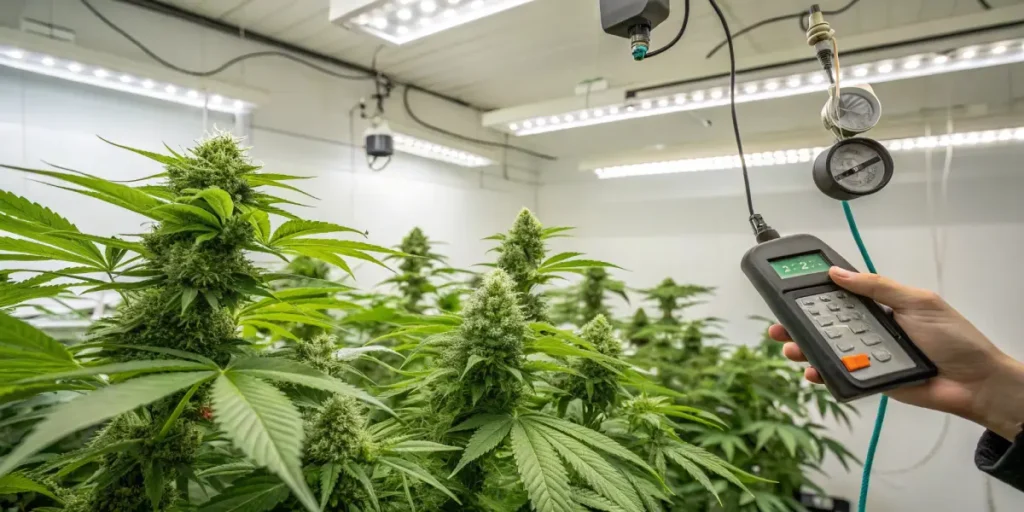
Optimal ECM Range for Flowering Stage
The flowering stage is when cannabis plants focus on producing buds. During this time, they need a different nutrient mix, particularly with higher levels of phosphorus and potassium. The ECM should be increased to between 1.6 and 2.0, depending on the strain and growing medium.
Maintaining proper ECM cannabis during flowering is important for maximizing bud development and potency. If the ECM is too low, the plants won’t have enough nutrients to produce large, resinous buds. However, if the ECM is too high, it can lead to nutrient burn and reduce yield quality.
Adjusting ECM Based on Strain and Growth Medium
Different cannabis strains have different nutrient needs, and the growing medium you use also plays a function in how nutrients are absorbed. Some strains, particularly sativa-dominant hybrids, may require a lower ECM during flowering, while indica strains might thrive with slightly higher levels.
Additionally, the growing medium (whether soil, coco coir, or hydroponics) affects how nutrients are absorbed. Hydroponic systems often require lower ECM levels because nutrients are delivered directly to the roots, while soil-grown plants may need a slightly higher ECM due to the buffering capacity of the soil. Knowing your specific strain’s needs and how your medium affects nutrient uptake is essential for maintaining proper ECM cannabis.
How to Measure ECM for Cannabis Cultivation
To ensure proper ECM cannabis throughout your grow, it’s important to regularly measure the electrical conductivity of your nutrient solution. Monitoring these levels allows you to make precise adjustments, ensuring your plants receive the nutrients they need at every stage of their development.
Tools You Need to Measure ECM
Measuring ECM is relatively simple with the right tools. The most commonly used device for this task is a digital ECM meter, also known as an EC or TDS (total dissolved solids) meter. These meters measure the conductivity of your water or nutrient solution, giving you an accurate reading of the dissolved nutrient levels.
When selecting an ECM meter, look for one that’s waterproof and easy to calibrate. Many meters come with temperature compensation features, ensuring your readings remain accurate even if the solution’s temperature fluctuates. Keeping your tools clean and regularly calibrated ensures you’re maintaining proper ECM cannabis throughout the grow.
Step-by-Step Guide to Monitoring ECM Levels
To get accurate ECM readings and maintain proper ECM cannabis, follow these simple steps:
- Fill a container with your nutrient solution: Before you feed your plants, mix your nutrients with water according to the manufacturer’s instructions. Make sure the water is at room temperature for the most accurate results.
- Turn on your ECM meter: Ensure that your meter is calibrated and ready to use. Calibration involves using a solution with a known ECM level, and it should be done regularly to ensure accuracy.
- Place the probe in the nutrient solution: Insert the ECM meter’s probe into the water and wait for a stable reading. Most digital meters will give you a number that represents the electrical conductivity of the solution in milliSiemens per centimeter (mS/cm).
- Compare the reading to the desired ECM range: Based on the stage of your cannabis plant’s growth, compare your reading to the ideal ECM range. If the ECM is too low or too high, adjust the nutrient levels accordingly before feeding your plants.
By regularly checking and adjusting nutrient levels, you ensure that proper ECM cannabis is maintained throughout the growth cycle.
How to Calibrate ECM Meters for Accurate Readings
Maintaining accurate readings is essential for managing proper ECM cannabis, and regular calibration of your ECM meter is the best way to achieve this. Calibration should be done at least once a month or whenever you notice inconsistent readings. Here’s how you can calibrate your meter:
- Purchase a calibration solution: Calibration solutions are pre-mixed liquids with a known ECM value. These are typically labeled with the specific ECM level, such as 1.4 mS/cm.
- Clean your ECM meter’s probe: Before calibrating, ensure that the probe is clean by rinsing it with distilled water. Any residue from previous readings could affect the accuracy.
- Immerse the probe in the calibration solution: Place the probe in the calibration liquid and wait for a reading.
- Adjust the meter: If the reading does not match the value of the calibration solution, adjust the meter until the reading aligns with the solution’s known ECM level.
- Rinse and store: After calibrating, rinse the probe with distilled water again and store the meter properly. Now it’s ready for use in maintaining proper ECM cannabis levels.
Managing ECM in Hydroponic vs. Soil Grows
Proper ECM cannabis management can vary depending on whether you’re growing in a hydroponic system or in soil. Both growing methods require careful monitoring of nutrient levels, but each has unique challenges and best practices for maintaining the ideal ECM range.
Differences in ECM Control Between Hydroponics and Soil
In hydroponic systems, plants receive their nutrients directly from the water, making ECM control more precise and immediate. Since there’s no soil to act as a buffer, any changes in ECM will affect the plants right away. For this reason, it’s important to check ECM levels daily when growing hydroponically.
In soil grows, the nutrients are absorbed more slowly, and the soil provides some buffer against immediate changes in nutrient concentration. While ECM still needs to be monitored, changes happen more gradually, allowing for more flexibility. However, proper ECM cannabis levels are still important for avoiding nutrient deficiencies or overloads in both growing mediums.
How to Adjust ECM in Hydro Systems
Maintaining proper ECM cannabis in a hydroponic setup requires regular adjustments to the nutrient solution. If the ECM is too high, add fresh water to dilute the nutrient concentration. If the ECM is too low, add more nutrients to the solution.
Since hydroponic systems recirculate water, it’s important to monitor ECM closely. As plants absorb nutrients, the concentration will decrease over time, and regular nutrient top-ups are necessary to maintain the correct balance.
ECM Considerations for Organic and Soil-Based Grows
In soil-based or organic grows, ECM management is slightly different. Organic fertilizers often take longer to break down and release nutrients, meaning that the ECM won’t spike as quickly as in hydroponics. However, you should still check ECM levels to ensure that your plants are getting the right amount of nutrients.
Proper ECM cannabis levels are essential for soil growers, especially during the flowering stage when nutrient demands increase. If the ECM is too low, adding a balanced fertilizer can help replenish the soil’s nutrient content without overfeeding the plants.
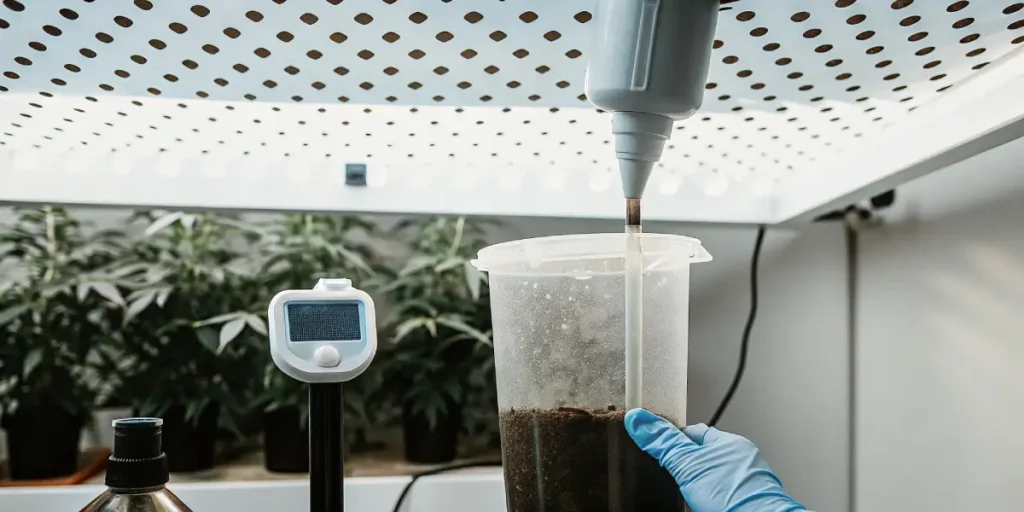
Problems with ECM and How to Fix Them
Even with careful monitoring, ECM-related problems can still arise. Knowing how to spot and fix issues quickly can save your plants from nutrient deficiencies or toxicities. Here are some common problems related to ECM in cannabis grows and how to address them.
Recognizing High ECM Levels in Cannabis Plants
If the ECM is too high, your plants may show signs of nutrient burn. This includes yellowing or browning of the leaf tips, wilting, and slow growth. High ECM levels mean that there’s too much salt in the nutrient solution, which can dehydrate the plants and prevent them from absorbing water properly.
To fix high ECM levels, flush the growing medium with fresh, pH-balanced water. This will wash out the excess salts and reset the nutrient balance, allowing your plants to recover. Flushing is a critical step in maintaining proper ECM cannabis and preventing long-term damage.
Symptoms of Low ECM in Cannabis
On the other hand, low ECM levels can lead to nutrient deficiencies. If the ECM is too low, your plants won’t have access to enough nutrients, which can cause slow growth, pale or yellowing leaves, and weak stems.
If you notice signs of nutrient deficiency, check your ECM levels and adjust accordingly by adding more nutrients to your solution or soil. Bringing the ECM back to the optimal range will help your plants regain their vigor and continue growing healthily.
Flushing and Resetting ECM for a Balanced Grow
Whether you’re dealing with high or low ECM, flushing is an effective way to reset the nutrient levels in your growing medium. Flushing involves watering your plants with plain water until the excess salts or deficient nutrients are washed out, giving you a clean slate to start from.
For hydroponic systems, simply drain and refill the nutrient reservoir with fresh water, then gradually reintroduce nutrients. In soil grows, water the plants heavily to leach out the excess nutrients, then adjust your feeding schedule to maintain proper ECM cannabis levels.
Long-Term Benefits of Maintaining Proper ECM in Cannabis Cultivation
Mastering proper ECM cannabis management brings long-term advantages that can significantly improve the quality and quantity of your harvest. From healthier plants to more potent buds, maintaining the ideal ECM levels will ensure your cannabis grows are productive and efficient. Let’s explore the long-term benefits of consistent ECM control.
Higher Yields and More Potent Buds
When cannabis plants are given the right amount of nutrients at every stage of growth, they produce stronger, healthier flowers. By maintaining proper ECM cannabis levels, you ensure that your plants have consistent access to the nutrients they need for optimal growth. This results in higher yields, with buds that are more dense and potent.
Proper ECM also influences the quality of cannabinoids and terpenes, the compounds responsible for the psychoactive effects and aroma of cannabis. With better nutrient management, you’ll see more resin production on your flowers, increasing the potency of the final product. Proper ECM cannabis management leads to more potent and fragrant buds, giving you a superior harvest.
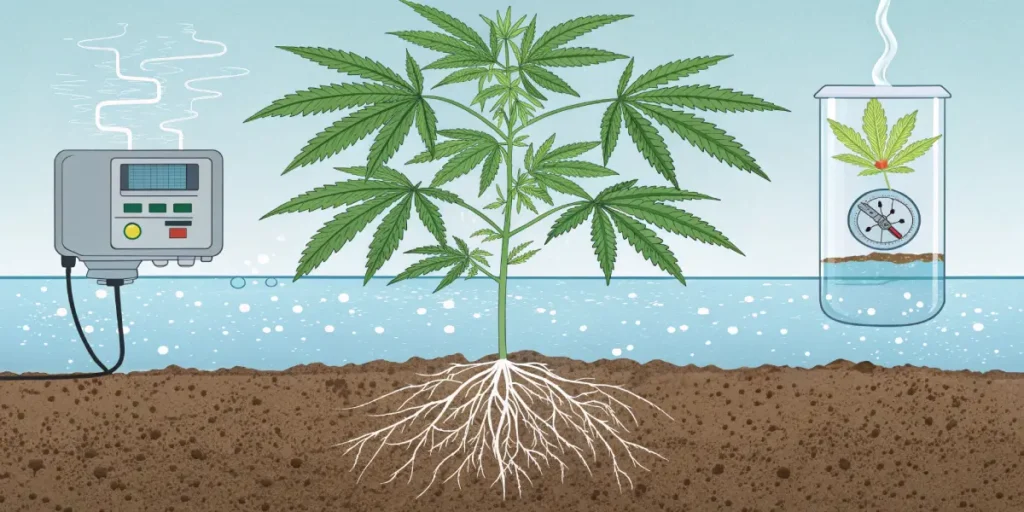
Preventing Nutrient Burn and Deficiencies
One of the most common issues cannabis growers face is nutrient imbalances. Too many nutrients can cause nutrient burn, while too few can lead to deficiencies. Both problems can stunt growth and reduce yields. With proper ECM cannabis monitoring, you can prevent these issues by keeping nutrient levels within the optimal range.
When you monitor ECM regularly, you can quickly identify when your plants need more or fewer nutrients. This helps you avoid the dramatic swings in nutrient levels that can damage your plants. Long-term control of ECM results in healthier, more resilient plants that are less likely to suffer from nutrient burn or deficiency.
Healthier Root Systems and Better Water Absorption
ECM affects more than just the nutrients your plants receive—it also influences how well your plants absorb water. If the ECM is too high, it can disrupt water uptake, leading to dehydration and stress. Maintaining proper ECM cannabis levels ensures that your plants can absorb water efficiently, promoting strong root development and overall plant health.
A healthy root system is essential for cannabis plants to thrive. Strong roots anchor the plant and allow for better nutrient and water absorption. By managing ECM correctly, you create an environment where roots can grow freely, leading to healthier, more vigorous plants throughout the entire growth cycle.
Increased Disease Resistance
When your cannabis plants are healthy and well-nourished, they are naturally more resistant to pests and diseases. Poor nutrient management can weaken your plants, making them more susceptible to issues like root rot, mold, and pest infestations. Maintaining proper ECM cannabis levels supports your plants’ immune systems, helping them fend off diseases and environmental stress.
In addition to proper ECM, maintaining ideal environmental conditions like humidity, temperature, and airflow further strengthens your plants’ natural defenses. Combining these factors creates a more stable, resilient grow environment, reducing the risk of disease and increasing your chances of a successful harvest.
Tips for Consistently Maintaining Proper ECM in Cannabis Grows
Managing ECM requires regular attention and precision, but it doesn’t have to be difficult. With a few simple practices, you can ensure that your cannabis plants receive the correct nutrient levels throughout their growth. Here are some tips for maintaining proper ECM cannabis levels:
1. Regularly Monitor ECM Levels
The key to maintaining proper ECM is frequent monitoring. Check your ECM levels every few days during the vegetative and flowering stages, especially if you’re growing hydroponically. This will allow you to make adjustments as soon as nutrient levels start to deviate from the optimal range.
2. Calibrate Your ECM Meter Regularly
An ECM meter is only as good as its calibration. Over time, meters can drift, leading to inaccurate readings. Make sure to calibrate your meter regularly using a calibration solution. Doing this ensures that your readings are accurate, helping you maintain proper ECM cannabis levels.
3. Flush Your System Periodically
Even with careful nutrient management, salts can build up in the growing medium over time. Flushing your system with clean, pH-balanced water helps remove excess salts and reset the ECM to optimal levels. Regular flushing is especially important in hydroponic systems but can also be beneficial for soil growers.
4. Adjust Nutrient Levels Based on Growth Stage
Cannabis plants have different nutrient needs depending on their growth stage. During the seedling stage, ECM should be kept low to avoid overfeeding, while vegetative and flowering stages require higher nutrient concentrations. Adjusting ECM based on these needs will help you maintain proper ECM cannabis levels throughout the grow.
5. Monitor pH Levels Alongside ECM
ECM and pH levels work hand-in-hand to determine how well your plants absorb nutrients. Even if your ECM is within the optimal range, improper pH can prevent nutrient uptake. Regularly check pH levels in addition to ECM to ensure that your plants are absorbing nutrients efficiently.
FAQs
What is ECM in cannabis growing, and why is it important?
ECM stands for Electrical Conductivity Measurement, which gauges the concentration of dissolved nutrients in your water or growing medium. Proper ECM is essential in cannabis cultivation because it helps ensure plants receive the right balance of nutrients. Too low an ECM can cause deficiencies and weak growth, while too high can result in nutrient burn and root damage.
What are the ideal ECM levels for different cannabis growth stages?
- Seedling stage: 0.4–0.6 mS/cm (low nutrients to avoid stress)
- Vegetative stage: 1.0–1.4 mS/cm (increased nutrients for strong growth)
- Flowering stage: 1.6–2.0 mS/cm (higher nutrients for bud development)
Adjusting ECM at each stage helps support healthy development and maximize yield and potency.
How do I monitor and adjust ECM levels in my cannabis grow?
Use a calibrated ECM (EC or TDS) meter to measure nutrient solution conductivity. If levels are too high, dilute the solution with water; if too low, add nutrients. For hydroponic systems, daily checks are crucial. In soil grows, monitor regularly and flush the medium when necessary to maintain proper ECM and prevent nutrient buildup.




